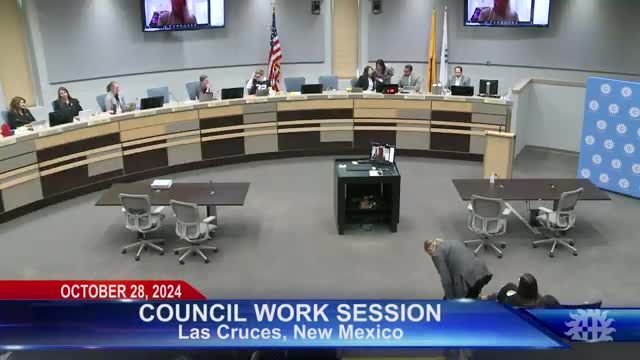Overdose prevention centers reshape addiction treatment landscape
October 29, 2024 | Las Cruces, Doña Ana County, New Mexico
This article was created by AI summarizing key points discussed. AI makes mistakes, so for full details and context, please refer to the video of the full meeting. Please report any errors so we can fix them. Report an error »

In a recent government meeting, a former senior director of programs for On Point NYC shared insights from their experience in establishing overdose prevention centers (OPCs) in New York City and their current role in Los Angeles. The speaker emphasized the critical need for these centers, which serve as vital resources for individuals struggling with substance use, while also addressing community concerns.
The presentation highlighted several key lessons learned from the implementation of OPCs in New York. One significant takeaway was the importance of meeting the needs of both the individuals using the centers and the surrounding communities. The speaker noted that effective harm reduction strategies must engage various stakeholders, including law enforcement and local businesses, to foster a supportive environment.
The discussion also pointed out that the legal framework surrounding addiction treatment often lags behind public health needs. For instance, the speaker referenced the evolving acceptance of medication-assisted treatment in prisons and the increasing accessibility of naloxone, a life-saving drug for overdose situations. These changes illustrate a shift towards integrating harm reduction practices into mainstream health policy.
Co-location of OPCs with other essential services was identified as a best practice, allowing for comprehensive support that includes medical care, mental health services, and hygiene facilities. The speaker stressed that while OPCs are not a standalone solution to the addiction crisis, they play a crucial role in a broader continuum of care.
The presentation also detailed the operational aspects of the New York OPCs, which have registered over 55,100 individuals since their launch. These centers provide a safe space for drug use, allowing for immediate access to health services and reducing public drug use in the community. The speaker emphasized the importance of creating welcoming and dignified environments to encourage engagement from users and to mitigate stigma.
In conclusion, the speaker called for continued investment in harm reduction strategies, highlighting the need for a collaborative approach that includes community input and addresses the complexities of addiction treatment. The insights shared during the meeting underscore the evolving landscape of public health responses to substance use and the critical role of overdose prevention centers in saving lives and fostering recovery.
The presentation highlighted several key lessons learned from the implementation of OPCs in New York. One significant takeaway was the importance of meeting the needs of both the individuals using the centers and the surrounding communities. The speaker noted that effective harm reduction strategies must engage various stakeholders, including law enforcement and local businesses, to foster a supportive environment.
The discussion also pointed out that the legal framework surrounding addiction treatment often lags behind public health needs. For instance, the speaker referenced the evolving acceptance of medication-assisted treatment in prisons and the increasing accessibility of naloxone, a life-saving drug for overdose situations. These changes illustrate a shift towards integrating harm reduction practices into mainstream health policy.
Co-location of OPCs with other essential services was identified as a best practice, allowing for comprehensive support that includes medical care, mental health services, and hygiene facilities. The speaker stressed that while OPCs are not a standalone solution to the addiction crisis, they play a crucial role in a broader continuum of care.
The presentation also detailed the operational aspects of the New York OPCs, which have registered over 55,100 individuals since their launch. These centers provide a safe space for drug use, allowing for immediate access to health services and reducing public drug use in the community. The speaker emphasized the importance of creating welcoming and dignified environments to encourage engagement from users and to mitigate stigma.
In conclusion, the speaker called for continued investment in harm reduction strategies, highlighting the need for a collaborative approach that includes community input and addresses the complexities of addiction treatment. The insights shared during the meeting underscore the evolving landscape of public health responses to substance use and the critical role of overdose prevention centers in saving lives and fostering recovery.
View full meeting
This article is based on a recent meeting—watch the full video and explore the complete transcript for deeper insights into the discussion.
View full meeting
